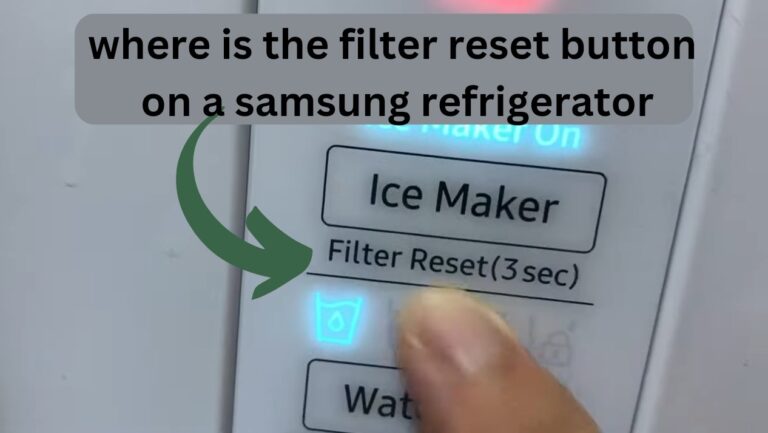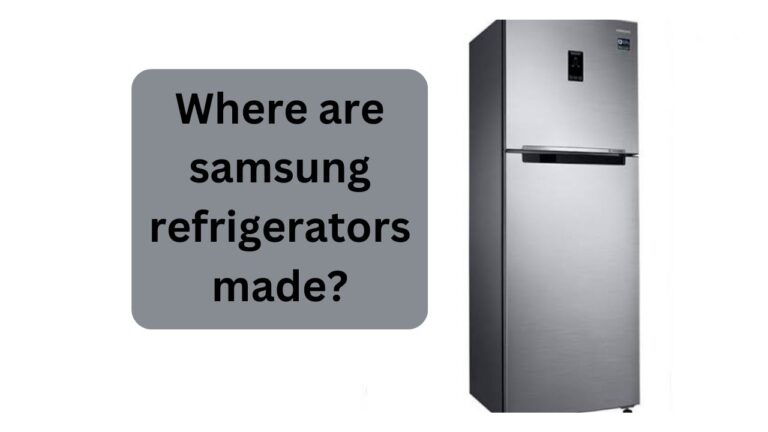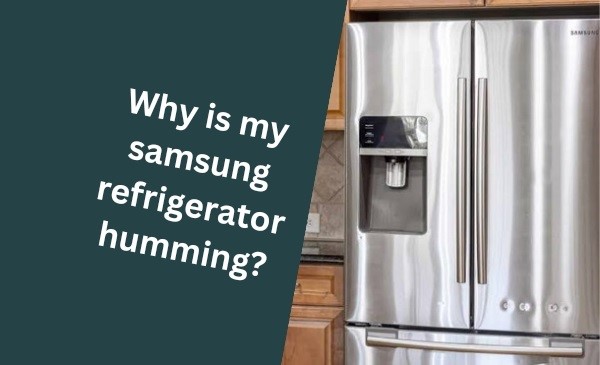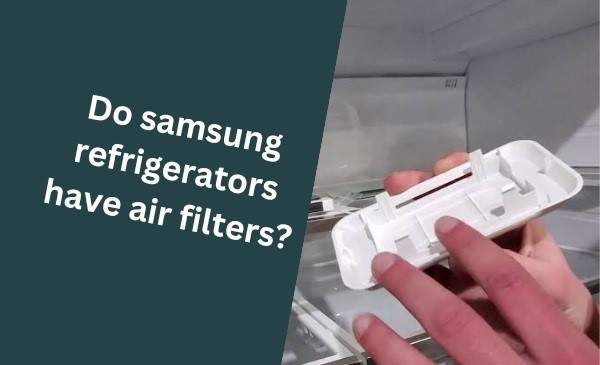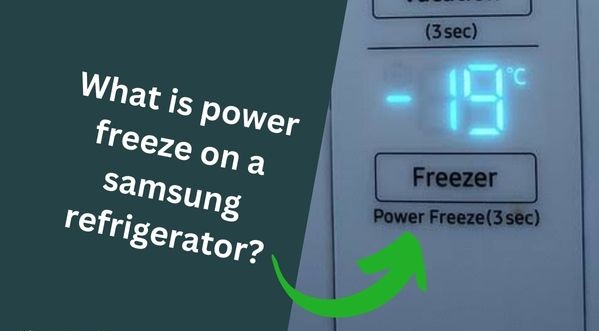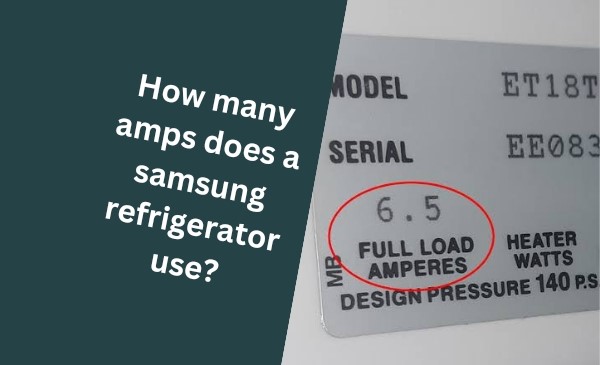The optimal temperature for a Samsung refrigerator should be set at around 37 degrees Fahrenheit. Keeping the refrigerator at this temperature ensures that food stays fresh and prevents bacteria growth.
Refrigerators with adjustable temperature settings allow users to control the climate inside the fridge to suit their specific needs. By setting the temperature to 37 degrees Fahrenheit, Samsung refrigerators maintain an ideal environment for storing perishable items like fruits, vegetables, dairy products, and meats.
This temperature range helps preserve the quality and taste of food, while also extending its shelf life. It is crucial to maintain the recommended temperature to ensure food safety and prevent spoilage.
Importance Of Setting The Right Temperature
Setting the right temperature in your Samsung refrigerator is crucial for ensuring the freshness and longevity of your food. By understanding the importance of setting the correct temperature, you can maintain food safety and optimize the cooling process for longer shelf life.
Relationship Between Temperature And Food Safety
Temperature plays a vital role in food safety. When the temperature is too high, harmful bacteria can multiply, putting you at risk of foodborne illnesses. On the other hand, a temperature that is too low can cause food to freeze and alter its texture and flavor. It is important to find the right balance to keep your food safe and maintain its quality.
Optimal Cooling For Longer Shelf Life
Setting the temperature of your Samsung refrigerator at the optimal level can help extend the shelf life of your groceries. By keeping the temperature in the recommended range, you can slow down the deterioration process and preserve the freshness of fruits, vegetables, meats, and other perishable items.
To achieve optimal cooling, it is generally recommended to set your Samsung refrigerator between 35°F (2°C) and 38°F (3°C) for the refrigerator compartment and between 0°F (-18°C) and 5°F (-15°C) for the freezer compartment. These temperature ranges ensure that your food stays fresh and safe for consumption for an extended period.
It is worth noting that the ideal temperature may vary depending on the specific model of your Samsung refrigerator, so it is best to consult your user manual or the manufacturer’s guidelines for the recommended temperature settings. By adhering to these guidelines, you can maintain the best conditions for your food and prevent any potential risks.
By understanding the relationship between temperature and food safety and setting the right temperature in your Samsung refrigerator, you can ensure that your food stays fresh, safe, and delicious for as long as possible.
Recommended Temperature Settings For Samsung Refrigerators
When it comes to keeping your food fresh and your beverages cold, the temperature at which you set your Samsung refrigerator plays a crucial role. Finding the right temperature settings can not only ensure the longevity of your food but also maximize its flavor and quality. In this blog post, we will guide you through the recommended temperature settings for Samsung refrigerators, helping you make the most out of your fridge.
Understanding The Default Temperature Settings
Before delving into adjusting the temperature, it’s essential to understand the default temperature settings of your Samsung refrigerator. The default temperature for the freezer compartment is typically set to 0 degrees Fahrenheit (-18 degrees Celsius), while the fresh food compartment is set to 37 degrees Fahrenheit (3 degrees Celsius).
These default settings are carefully calibrated to provide an optimal balance between food preservation and energy efficiency. However, keep in mind that certain factors, such as the ambient temperature and the amount of food stored, can affect the performance of your refrigerator.
Adjusting The Temperature For Different Purposes
Samsung refrigerators offer the flexibility to adjust the temperature settings based on your specific needs. Understanding the different purposes for temperature adjustment can help you optimize your refrigerator’s performance:
1. Storing perishable items
If you’re storing perishable items such as raw meat, dairy products, or leftovers, it’s crucial to maintain a temperature below 40 degrees Fahrenheit (4 degrees Celsius). This temperature range inhibits the growth of bacteria, keeping your food fresh and safe to consume for a longer time.
2. Preserving fruits and vegetables
For optimum freshness and crispness, fruits and vegetables require a slightly higher humidity level. Adjusting the fresh food compartment temperature to around 40-45 degrees Fahrenheit (4-7 degrees Celsius) can help retain the moisture and nutritional value of your produce.
3. Freezing foods
Whether you’re freezing meat, seafood, or leftovers, setting the freezer compartment temperature to below 0 degrees Fahrenheit (-18 degrees Celsius) is vital to keep your food safe from spoilage. This low temperature prevents the formation of ice crystals and preserves the quality of your frozen items.
Remember that while these temperature ranges are recommended guidelines, personal preferences, and individual storage needs may vary. It’s always a good idea to monitor your refrigerator’s performance regularly and adjust the temperature settings accordingly.
In summary, by understanding the default temperature settings and making necessary adjustments for different purposes, you can ensure your Samsung refrigerator keeps your food fresh and delicious. Finding the perfect temperature ensures that every bite is enjoyable, so experiment with these settings to find what works best for you and your food!
Factors To Consider When Setting The Temperature
Setting the right temperature for your Samsung refrigerator is crucial in maintaining the quality and freshness of your food. There are several factors to consider when determining the optimal temperature for your refrigerator. By understanding these factors, you can ensure that your refrigerator is operating efficiently and effectively. In this section, we will explore the external factors that can affect refrigerator temperature, as well as the ideal temperature for storing different types of food.
External Factors Affecting Refrigerator Temperature
While it is important to set the temperature on your Samsung refrigerator correctly, it is equally vital to be aware of the external factors that can impact the internal temperature. These external factors can influence how well your refrigerator maintains the desired temperature, ultimately affecting the freshness and safety of your food. Here are some common external factors:
- Room Temperature: The ambient temperature of your kitchen or the room where your refrigerator is placed can have a significant impact on its internal temperature. If the room temperature is high, your refrigerator will have to work harder to maintain the desired temperature. Conversely, a low room temperature may cause your refrigerator’s temperature to drop below the optimal level.
- Proximity to Heat Sources: Keep your refrigerator away from heat sources such as ovens, stoves, and direct sunlight. Heat sources can increase the temperature inside your refrigerator, making it harder to maintain the desired coolness.
- Air Circulation: Ensure that there is adequate airflow around your refrigerator. Blocked or restricted airflow can lead to temperature fluctuations inside the refrigerator, compromising the freshness of your food.
- Frequency of Door Openings: Every time you open the refrigerator door, warm air enters, and cold air escapes. The more frequently you open the door, the more challenging it becomes for the refrigerator to maintain its temperature. Try to keep door openings to a minimum.
Type Of Food Stored And Its Ideal Temperature
Different types of food have specific temperature requirements to maintain their quality and safety. Here is a brief guide on the ideal temperatures for storing common food items:
| Food Type | Ideal Refrigerator Temperature |
| Perishable Foods (e.g., meat, poultry, fish, dairy products) | Cold: 34°F – 40°F (1°C – 4°C) |
| Fruits and Vegetables | Cool: 35°F – 45°F (2°C – 7°C) |
| Leftovers and Cooked Foods | Cold: 34°F – 40°F (1°C – 4°C) |
| Frozen Foods | Freezing Point: 0°F (-18°C) or below |
It is important to note that these temperatures serve as general guidelines, and some food items may have specific temperature requirements. Always refer to the packaging or specific recommendations for individual food items to ensure proper storage conditions.
By considering the external factors affecting refrigerator temperature and understanding the ideal temperature for different types of food, you can maximize the freshness and longevity of your groceries. Take the time to adjust and monitor the temperature settings on your Samsung refrigerator to ensure optimal performance and food safety.
Tips For Maintaining The Right Temperature
Proper temperature maintenance is essential for keeping your Samsung refrigerator running efficiently and ensuring the freshness and longevity of your food. In this section, we will explore two key aspects to consider: regularly checking and calibrating the temperature settings and proper organization of food items for efficient cooling.
Regularly Checking And Calibrating The Temperature Settings
It is crucial to periodically check and adjust the temperature settings of your Samsung refrigerator to maintain optimal cooling performance. Here are some tips to follow:
- Keep a thermometer handy: Invest in a reliable refrigerator thermometer to regularly monitor the internal temperature of your appliance.
- Check recommended temperature range: Refer to the Samsung refrigerator’s user manual or website to determine the ideal temperature range for your specific model. In general, the refrigerator compartment should be set between 35°F (1.7°C) to 38°F (3.3°C).
- Wait before adjusting: After making any temperature adjustments, allow at least 24 hours for the refrigerator to stabilize and reach the new temperature before checking again.
- Calibrate if necessary: If your refrigerator’s temperature consistently falls outside the recommended range, you may need to calibrate the settings accordingly. Refer to the user manual or contact Samsung customer support for guidance on how to calibrate the temperature settings.
Proper Organization Of Food Items For Efficient Cooling
The way you arrange your food items inside the refrigerator can significantly impact the cooling efficiency. Follow these guidelines for an organized and optimized refrigerator layout:
- Utilize designated compartments: Most Samsung refrigerators have specific compartments for fruits, vegetables, meats, and dairy products. Placing items in their respective compartments helps maintain an even cooling distribution and prevents cross-contamination.
- Avoid overcrowding: Ensure there is enough space between food items to allow air circulation. Overcrowding can hinder the refrigerator’s cooling performance and lead to temperature fluctuations.
- Position perishables strategically: Place highly perishable items such as meat and dairy in the coldest parts of the refrigerator, typically at the back and on lower shelves. This helps prevent bacterial growth and prolongs the freshness of these items.
- Check door seals: Regularly inspect the door gaskets to ensure they are properly sealing the refrigerator. A faulty seal can result in temperature loss and energy wastage.
By following these tips, you will be able to maintain the right temperature in your Samsung refrigerator and maximize its efficiency while keeping your food fresh and safe.
Troubleshooting Common Temperature-related Issues
The temperature at which your Samsung refrigerator is set plays a crucial role in ensuring the freshness and longevity of your food. However, it is not uncommon to encounter temperature-related issues that can affect the performance of your appliance. Identifying signs of temperature fluctuations and knowing troubleshooting techniques to address cooling problems can help you maintain an optimal temperature setting for your Samsung refrigerator.
Identifying Signs Of Temperature Fluctuations
Temperature fluctuations in your Samsung refrigerator can have adverse effects on the quality and safety of your food. By recognizing the signs of these fluctuations, you can take prompt action to mitigate the problem. Here are some tell-tale signs to look out for:
- Unusual and frequent changes in the temperature display of your refrigerator
- Frozen or partially frozen food items in the refrigerator compartment
- Frequent spoilage or shorter shelf life of perishable foods
- Visible condensation or ice buildup in the refrigerator or freezer compartments
- Inconsistent cooling throughout the fridge, with some areas being significantly colder or warmer than others
Should you notice any of these signs, it is crucial to troubleshoot the issue in a timely manner to prevent further temperature-related problems.
Troubleshooting Techniques To Address Cooling Problems
When it comes to troubleshooting temperature issues in your Samsung refrigerator, certain techniques can help you effectively address cooling problems. By following these troubleshooting steps, you can regain control over the temperature settings and ensure the optimal performance of your appliance:
- Check the temperature setting: Start by ensuring that your Samsung refrigerator is set to the appropriate temperature. Ideally, the fridge compartment should be set between 35°F and 38°F (1.7°C and 3.3°C) and the freezer compartment between 0°F and 5°F (-17.8°C and -15°C).
- Ensure proper ventilation: Make sure that the vents inside your refrigerator are not blocked by food items or other objects. Adequate airflow is essential for maintaining consistent temperatures throughout the appliance.
- Inspect the door seals: Damaged or worn-out door seals can cause temperature fluctuations in your refrigerator. Check the seals for any cracks, tears, or gaps, and replace them if necessary to create an airtight seal.
- Don’t overload the fridge: Overloading your refrigerator can restrict airflow and lead to uneven cooling. Remove any unnecessary items to allow for proper circulation.
- Keep the condenser coils clean: Dust and debris accumulation on the condenser coils can impair heat dissipation and cooling efficiency. Regularly clean the coils to enhance the refrigerator’s performance.
- Monitor ambient temperature: The ambient temperature in the room where your refrigerator is located can impact its cooling capabilities. Avoid placing the appliance near heat sources such as ovens or direct sunlight.
By applying these troubleshooting techniques, you can overcome common temperature-related issues and ensure that your Samsung refrigerator maintains the desired temperature for optimum food storage.
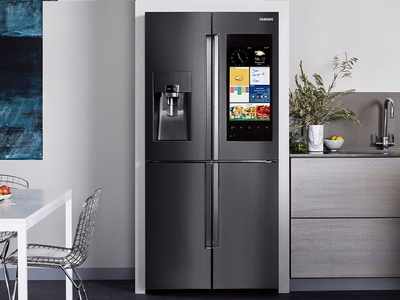
Credit: timesofindia.indiatimes.com
Frequently Asked Questions For What Temperature Should A Samsung Refrigerator Be Set At
What Is The Ideal Temperature Setting For A Samsung Refrigerator?
The ideal temperature setting for a Samsung refrigerator is between 38 and 40 degrees Fahrenheit. This ensures that your food stays fresh and prevents bacteria growth. Avoid setting it too low or high, as it can impact food quality and energy efficiency.
How Do I Adjust The Temperature On My Samsung Refrigerator?
To adjust the temperature on your Samsung refrigerator, locate the control panel inside the fridge. Press the fridge button repeatedly until the desired temperature is displayed. Use the up or down arrow buttons to set the temperature accordingly. Allow a few hours for the temperature to stabilize.
Why Is It Important To Maintain The Correct Temperature In A Samsung Refrigerator?
Maintaining the correct temperature in a Samsung refrigerator is crucial for food safety. This helps prevent the growth of bacteria and ensures that perishable items stay fresh for longer. Additionally, the right temperature setting can optimize energy efficiency and extend the lifespan of your refrigerator.
Conclusion
To maintain optimal food freshness and prevent spoilage, it is crucial to set your Samsung refrigerator at the right temperature. By following the manufacturer’s recommendations and keeping the temperature between 36-38 degrees Fahrenheit (2-3 degrees Celsius) in the refrigerator compartment and 0 degrees Fahrenheit (-18 degrees Celsius) in the freezer compartment, you can ensure the longevity of your food and the efficiency of your appliance.
Don’t let fluctuating temperatures compromise the quality of your stored items. Stay mindful of your refrigerator settings and enjoy the benefits of properly preserved food.
Hello Readers, I am Mechanic Shuvo, a seasoned refrigerator solution expert with over 11 years of hands-on experience in the field. Throughout my career, I've dedicated myself to understanding the ins and outs of refrigeration systems, honing my skills as a refrigerator mechanic. My passion for these appliances led me to create the website "refrigeratorsolutionsguide.com," where I aim to share my wealth of knowledge and expertise with others.
Over the years, I've encountered a wide range of refrigerator issues and have successfully resolved them all. From common problems like temperature fluctuations and strange noises to more complex technical issues, I've seen it all. Through my website, I hope to provide practical solutions, insightful tips, and guidance to help you keep your refrigerators running smoothly.


